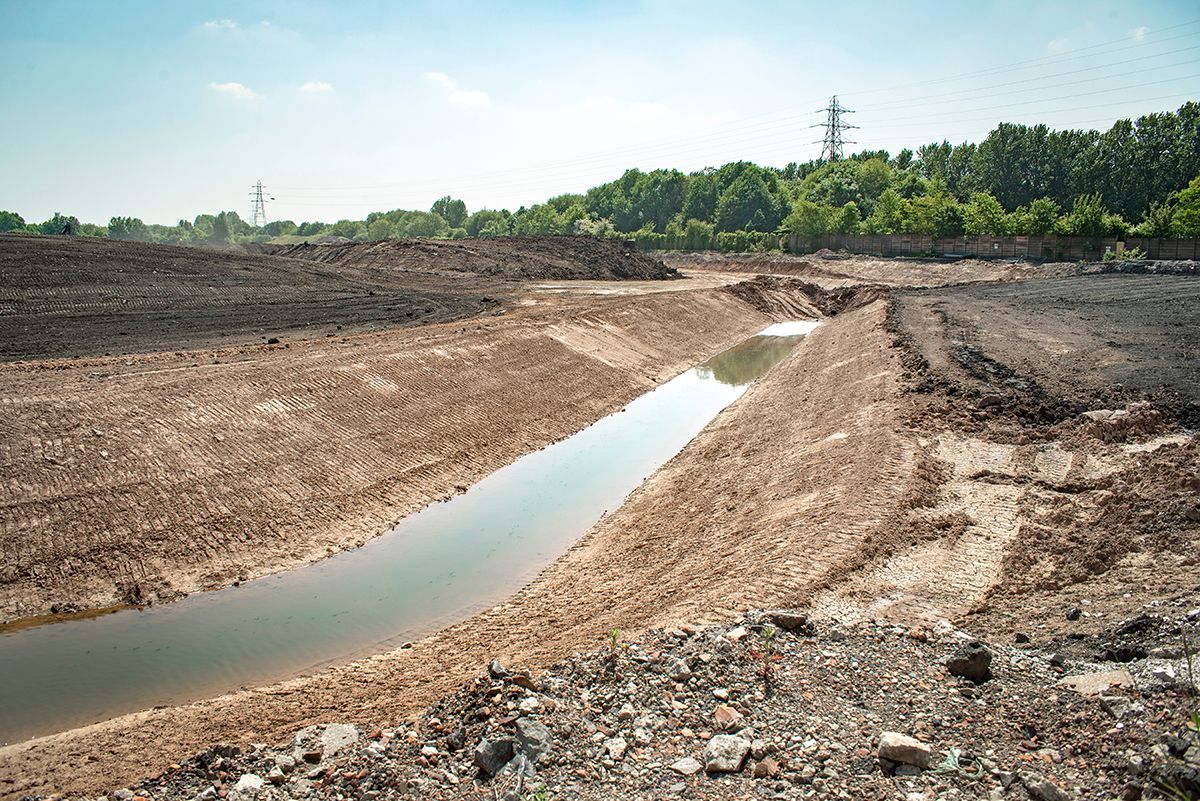Do not disturb
Workers undertaking maintenance, refurbishment and demolition are most at risk from developing asbestos related diseases but are current controls sufficient?

Workers undertaking maintenance, refurbishment and demolition are most at risk from developing asbestos related diseases but are current controls sufficient?
Asbestos-related diseases such as mesothelioma, lung cancer and asbestosis kill 107,000 people worldwide each year, according to the World Health Organization. Of that toll, the UK accounts for more than 5,000 deaths, the Health and Safety Executive (HSE) recorded. However, the conditions associated with the material develop decades after initial exposure, so today’s figures reflect legacy working conditions and exposures. They tell us nothing about the extent of current exposure and possible consequences.
The HSE predicts the number of deaths will continue at current levels, before starting to decline after 2020. This is because most fatalities in the UK are due to very high exposures during the milling, manufacturing and installation of asbestos products before 1980, when a voluntary import ban on brown asbestos was introduced. But asbestos risks are not confined to the past, and the expectation of a fall in deaths is no reason for complacency.
Although asbestos has been banned in the UK since 1999, it is still found in asbestos-containing materials (ACMs) in commercial and public buildings and homes in lagging, asbestos cement products, finishes and coatings, and asbestos insulating board (AIB). The highest risk of exposure is among those working in maintenance, refurbishment or demolition, but people can also be exposed simply by working in a building containing asbestos if fibres are dislodged and breathed in.
The risk is managed in non-domestic premises in Great Britain by the Control of Asbestos Regulations 2012. Independent studies have largely confirmed that the regime is meeting its objectives, but concerns remain, including around the quality of surveys and the extent to which dutyholders, especially in small and medium-sized enterprises (SMEs), understand their responsibilities.
More widely, questions are being raised about the suitability of prevailing control limits and the sensitivity and use of air monitoring for longer-term occupational and environmental exposure in buildings. In addition, MPs and trade unions are demanding a bolder approach: eradicating future risk by removing all ACMs, starting with schools and other public buildings.
Aspirational goals
The Control of Asbestos Regulations 2012 (which implement EU Directive 2009/148/EC) places a specific duty to manage asbestos on owners and those responsible for maintenance in non-domestic premises. In its supporting guidance, the HSE states that if an ACM “is in good condition, well protected either by its position or physical protection, reducing the likelihood of damage, and is unlikely to be worked on regularly or otherwise disturbed, it is usually safer to leave it in place and manage it”.
In 2015, the All-party Parliamentary Group (APPG) on Occupational Safety and Health challenged these assumptions. Although it is recognised that high exposure is now rare, it suggested that “the lower levels of exposure, which can lead to mesothelioma, are still happening on a daily basis”. It also questioned the degree to which deaths may decline after 2020, arguing that accurate information on the extent of exposure since 1980 is lacking. It called for the removal of asbestos from public buildings and educational establishments by 2028 and from all buildings by 2035.
Commonly known as “managing in situ”, this approach relies on the competence of dutyholders in understanding the risks and ensuring ACMs are identified, recorded and properly monitored and controlled.
Other demands for phased removal focus on schools. This is largely due to the preponderance of so-called “system” buildings (which used substantial amounts of asbestos), the generally poor condition of the school estate, a lack of resources and investment, and the likelihood of inadvertent wear and tear due to children studying and playing in buildings. There is also evidence from independent government advisory group the carcinogenicity committee that a five year old is five times more likely than an adult of 30 to develop mesothelioma if they are exposed to it at the same time. This is because a child will normally have a longer future lifespan and so have more time for the disease to develop.
Charles PicklesCharles Pickles, Chief technical officer, Lucion ServicesThe Joint Union Asbestos Committee (JUAC), formed from trade union members of the Asbestos in Schools Group, is campaigning for a government-funded phased removal of all asbestos in schools, and – in the interim – improved management of the material.
JUAC chair John McClean supports the APPG’s recommendations but recognises that “the difficulties we have, in terms of resources, mean this is probably aspirational rather than deliverable”. But he remains convinced that there should at least be proper and costed plans in place, with ambitious goals.
“We’ve had this problem now since the late 1940s and 1950s,” he says. “Yes, some of the schools and public buildings Martin StearMartin Stear Director, Workplace Environment Solutionshave gone or have been refurbished – but the longer you leave it, the more expensive it gets, and successive governments are at fault. They’ve kicked the issue into the long grass, and this is partly because of the long latency period associated with asbestos diseases.”
Safer in situ
Responding to the calls for a more positive approach to removal, an HSE spokesperson told IOSH Magazine: “Although standards in general have improved, the HSE’s experience of regulating asbestos removal McClean_JohnJohn McClean JUAC chairactivity over the past 40 years does not suggest that removing asbestos in good condition and then re-occupying buildings would be safer than the current strategy of careful management in situ and removal when necessary.” He added, however, that “arguably there is already a sustainable continuous programme of gradual, controlled removal and disposal”, pointing to the 30,000-35,000 licensed removals notified to the HSE each year. “This pattern has persisted for many years.”
According to the HSE, demands for removal on a much larger scale “discount a number of practical problems”, including:
- a limited pool of competent contractors
- much asbestos is inaccessible until end of life when buildings can be demolished safely
- the difference in risk between material types
- removal workers put at risk of high exposures during work
- the fact that those nearby or reoccupying are entirely dependent on both the consistent diligence of workers and analysts and on the complete effectiveness of fibre containment (and later on the standard of surface cleanliness and maintenance of nominally “stripped” surfaces with adhering residual fibres).
Competent and correct
Martin Stear, a chartered occupational hygienist and director of consultancy Workplace Environment Solutions, agrees that “we shouldn’t lose sight of the fact that, while we don’t know how much asbestos is left in UK buildings, huge amounts have been taken away”. Like the HSE, he believes that any duty to remove would be “fraught with problems because you’ve got to assume it is being done competently and correctly”. In his experience, “many of the problems currently out there are due to poor historical asbestos removal”.
One licensed removal contractor told him that about 40% of its assignments involved clearing up work carried out incorrectly by others in the past.
Inadequate record keeping and over-zealous surveyors can also prove problematic. “The dutyholder may not have an accurate record, so they ask a surveyor to look at a boiler room again,” Stear explains. “The surveyor doesn’t see any obvious issues but, to be 100% certain, they take a swab sample and find the odd asbestos fibre, so that room is designated as contaminated and re-cleaned when there is an insignificant or trivial risk and resources would be better focused elsewhere.”
Poor presentation of survey reports can hamper effective management of asbestos. “A surveyor goes on site with an electronic device, punching in information as they go along, which is then uploaded to a computer, producing a report that is often lengthy, complex and difficult to understand,” says Stear. “Even for me, they can be hard to follow, so the average dutyholder doesn’t stand a chance, nor does the tradesperson who arrives on site.
“None of this is to do with any inadequacy in regulation. It’s to do with some licensed contractors, analysts and surveyors lacking competency. The regulatory framework, analysts’ standards and practices are there; it’s just there are some cases where people are not doing a very good job.”
In other cases, dutyholders fail to carry out their responsibilities under reg 4 of the Control of Asbestos Regulations 2012 (see A duty to manage, above). “They are responsible for making sure people do the right thing when on their site,” says Stear. “They don’t always do so for several reasons: they don’t have sufficient knowledge and training, they don’t have good up-to-date asbestos registers and pass on the right information, and they don’t plan jobs properly.”
The HSE acknowledges that the quality of surveys, commissioned by dutyholders to inform their planning, can vary and that the significance of the survey reports and resulting actions may not be fully understood by some SME clients. There are, it says, also “challenges around assuring reliable information flow from the dutyholder to those liable to disturb asbestos”. To resolve some of these issues, the HSE is working with industry leaders through the reformulated Asbestos Leadership Council (ALC).
Measure to manage
Some campaigners are concerned about the degree to which exposure to asbestos (outside those knowingly working with the material in controlled conditions) is measured and monitored (see box on removal and clearance).
“When you talk to people about asbestos, they often refer to the control limit in the regulations – the 0.1 f/cc,” says McClean. “The problem with this is that it is meant for people removing it under controlled conditions. But if you look at the built environment – which includes schools – it’s the inadvertent exposure to asbestos that’s becoming the major problem. There isn’t a safe level as such. If I had to change one piece of legislation, I’d be looking at bringing that down to the lowest possible level that could be found, so it would apply across the built environment.”
Charles Pickles, chief technical officer at asbestos consultancy Lucion Services, recently argued for the introduction of an occupational exposure limit of <0.0005 f/ml for occupied buildings known to contain higher-risk asbestos, along with periodic measuring of low-level exposures using techniques such as scanning electron microscopy, which can quantify asbestos in air to very low levels and distinguish between fibre types and other non-organic fibres.
Pickles says: “Phase contrast microscopy, the current method widely used in the UK, is suitable for measuring high levels such as we used to get in asbestos manufacture and installation, and we currently get during clearance and removal work. But when you’re dealing with managing asbestos in situ, where there aren’t these higher levels of exposure but instead perhaps chronic low-level exposure, it isn’t sufficiently sensitive. Without sensitive air monitoring, we do not know if asbestos exposures are as low as is reasonably practicable and if our buildings are safe.”
He accepts that the sheer quantity of asbestos still in buildings means most of it has to be managed in situ. “It’s the only practical way forward and works for the less dangerous chrysotile (white) asbestos,” he says. He notes that 88% of the total amount of asbestos originally imported into the UK was chrysotile, while the other 12% – amosite (brown) or crocidolite (blue) – he believes is more risky when left in situ. “Our focus should be on removing that,” he says, “and in the interim on measuring occupational exposure levels using more sensitive techniques.”
No safe threshold
The HSE advises “against solely focusing on headline control levels” and emphasises that the legal requirement is to reduce exposure to as low as reasonably practicable below a limit. “No safe threshold for asbestos exposure has so far been identified,” said the spokesperson.
He added: “The evidence so far strongly suggests that the much lower levels of fibre encountered today (after increased regulation and prohibitions) will lead to a continued reduction in future harm and that is already suggested by ongoing lung burden studies. Given that trend, it may be considered disproportionate to require additional routine air sampling in all or most pre-2000 non-domestic buildings.”
The HSE also points out that the Control of Asbestos Regulations focus “on work activities to protect workers who regularly are at risk, not on those who are not actively disturbing asbestos materials”. It emphasises that the duty to manage is intended to protect working building maintenance tradespeople, noting that “environmental levels indoors (or outdoors) are arguably a general public health issue” and suggesting it is better explored with bodies such as Public Health England.
Changing perceptions
Most campaigners agree there is plenty of guidance on managing asbestos available in the UK, from the HSE, the industry and also trade unions. There are also initiatives such as IOSH’s No Time to Lose campaign to raise awareness of asbestos-related cancer risks globally by collaborating with organisations worldwide, translating resources, and encouraging businesses to pledge to take action (see box right).
“Part of the problem for the public and young people, for example those going into building trade, is that, because it was banned in 1999, people think asbestos is not a problem anymore,” says McClean.
Another barrier is the long latency of the diseases. This presents challenges not only for timely data collection and interpretation but also in terms of public perception and policy response. McClean points to an incident where a wall fell down in a school in Edinburgh, killing a girl. “There was an instant response by the media to the death. But a schoolchild exposed now at seven might not develop a problem until their late 40s or early 50s. This is not a headline.”
The stand-off between campaigners’ calls for phased removal and the reality of the lack of resources, public engagement and political will is expected to continue. Meanwhile, the regulatory approach, based on the existing evidence base, is likely to stay substantially the same. Whether we are doing enough to control the risks remains a matter of debate, particularly in view of the lack of data as to the risks from current exposures. But as the APPG recently put it: how we act now will determine how many people continue to die in the future.
Original Source of Article: IOSH Magazine
Share on social media

Talk to us about asbestos and energy management services
Website by Infoserve | Cookies & Privacy Policy



